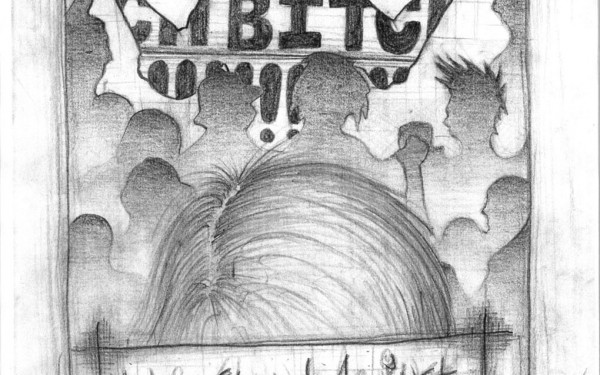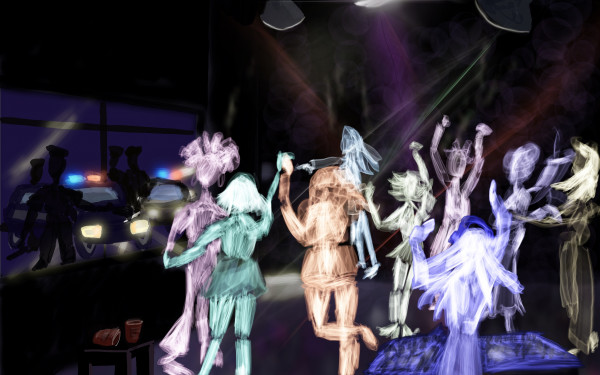A Second Assault
Why Women Don’t Report Sexual Violence
For many women that have been sexually assaulted, getting a conviction for their rape is a process so lengthy and excruciating that it almost amounts to a second trauma. This may explain why the large majority of them decide to remain silent: more than 91 per cent of them, according to Statistics Canada.
Many women are reluctant to report because “they know that their odds are statistically very, very low of getting a conviction,” said Lisa Steacy, a Canadian Association of Sexual Assault Centres representative. “They know that the criminal justice process is long, out of their control and quite difficult to go through.”
This impression isn’t wrong. Reporting a sexual assault is an arduous process that can easily last hours, depending on how long you have to wait for detectives and doctors to see you. Even once you finish reporting, it can take up to two years to get a sexual assault conviction.
The process of reporting begins when a victim contacts the authorities. “When it comes to a sexual assault, the person has two choices,” said Lina Borremans, a Community Relations Officer at the SPVM. “[One is to] call 9-1-1 right away on the spot. Then the patrol goes to the victim, and they’ll bring the victim right away to the hospital.” She explained that the doctor will then take a rape kit. After that, police will take a report of what happened, which will be turned over to an investigator in the sexual assault squad.
“The other way is [to report] a sexual aggression from many, many years ago,” she said. There is no time limit on reports, she said. Many women come into police stations years later to relieve themselves of the burden they have been carrying.
Once an assault is reported, the next step is to get a rape kit done. Rape kits, which also go by the formal title “sexual assault evidence collection kits,” are less of a “kit” and more of a full body exam, both internal and external. According to the Rape, Abuse and Incest National Network, an organization based in the United States, a standard rape kit involves a head-to-toe examination, samples of blood, hair, urine and other bodily secretions, photo documentation and collection of the victim’s clothing along with any other physical evidence. They can take anywhere from two to four hours to complete, not counting any waiting time at the hospital.
“Who wants to spend 12 hours of their day after having a traumatic event happen to them to sit around and wait for a stranger to re-traumatize them,” said Lucy Anacleto, the assistant coordinator for Concordia’s Peer Support and Advocacy program. “It’s a circus of trauma.”
The Canadian criminal justice system is primarily designed to punish wrongdoers. In sexual assault cases, the Crown prosecutes the case on the behalf of the state while a lawyer defends the accused. As for the victim, she is treated like a witness to the crime that was perpetrated against her.
This means that a lawyer does not necessarily represent women who report a sexual assault. Steacy says most women are not aware of this. “It’s a weird place to be,” she says. “And often when women learn that they don’t get an advocate, they’re quite surprised.”
Anacleto explained that many women also opt not to report because of the type of questions they are subjected to during trial. Victims are typically asked questions on the stand about their drinking habits, drug usage and their sexual history and preferences. “You have to jump through so many hoops and your own character ends up being on trial, sometimes more than the perpetrator,” said Anacleto. “I think that a lot of women would look at that option and say, ‘I don’t want to be dissected.’”
The problem with rape and sexual assault trials is that they are often one person’s word against the other’s. To add to that burden, 80 per cent of assailants are friends or family of the victim, according to Sexual Assault Canada. Steacy says the criminal justice system isn’t built to respond to that very well. “The lack of witnesses means that a lot of women are afraid.”
In any case, making such a commitment adds to the stress women experience after being assaulted, which may very well dissuade them from speaking out. “It would be easier to drop the charges,” says Melissa Martin, psychologist at the Institut Universitaire en Santé Mentale de Montréal.
“Sometimes it causes too much stress to go through it all.”
What’s more, if the victim suffers from post-traumatic stress she is even less likely to talk to anyone, according to Martin. One of the symptoms of this psychological disorder is avoidance, so the last thing the victim will want to do is think about—let alone talk about—the traumatic event.
Another reason many women choose not to report is low conviction rates. Because so few people who commit rape or other acts of sexual violence are even taken to trial, with an even smaller percentage receiving a guilty verdict, many women do not see the point in trying.
“It’s this feeling that, in the end, what guarantee is there that any justice will be done?” said Maya Rolbin-Ghanie, the campaigns coordinator at Concordia’s Centre for Gender Advocacy. “What is justice? To what end? Why would someone report if most of the reports get thrown out anyway?”
Statistics Canada indicates that 41 per cent of sexual assault cases resulted in a “guilty” verdict in 2011 and 2012. However, about 54 per cent of these cases received a sentence classified in the “other sentences” category on the website, which means the offender may have had their sentence suspended or been released on probation, among other possibilities.
Another factor which clouds this data is that an assailant who is charged with more than one crime is counted under the statistics for the most severe charge. This means that a perpetrator charged with rape and attempted murder would be considered an incident of attempted murder in Statistics
Canada’s eyes—not sexual assault.
One thing that has been improving international dialogue about sexual assault, however, is social media. “I think that the ability to spread information the way we can on Facebook and Twitter has changed the scope of the conversation and the people that can be included in it,” said Rolbin-Ghanie.
She expressed her hope that increased communication and openness would lead to an increase in reporting percentages in the coming years. “Survivors often say that they thought they were the only ones […] until they start talking to other people.”

_900_749_90.jpg)
_600_832_s.png)

_600_375_90_s_c1.jpg)


